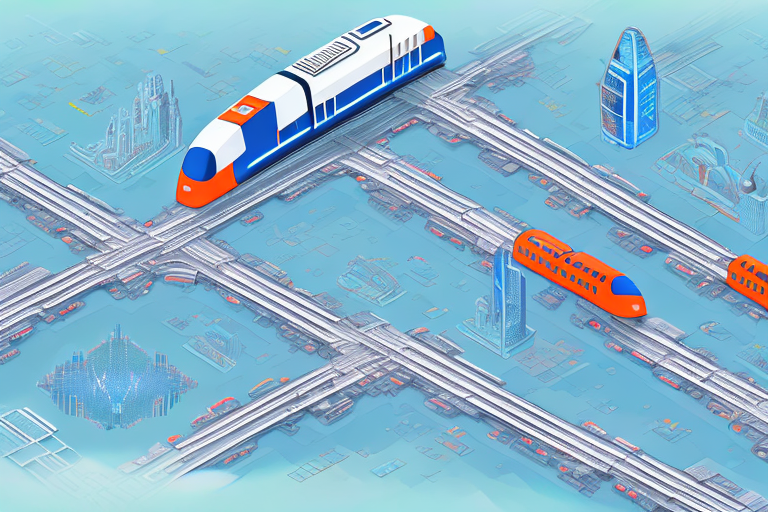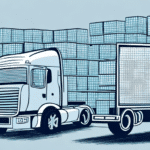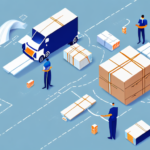The Future of the Logistics Industry: Navigating Challenges and Seizing Opportunities
The logistics industry is a critical pillar of the global economy, orchestrating the efficient movement of goods and services worldwide. Over the past decade, the sector has experienced significant growth, a trend that is expected to continue into the future. However, this growth brings along a set of challenges that the industry must navigate. This article delves into the current state of the logistics industry, examines the challenges it faces, and explores the opportunities that lie ahead.
Current Landscape of the Logistics Industry
Industry Overview
The logistics industry encompasses a wide array of activities, including transportation, warehousing, distribution, and inventory management. It plays a vital role in supporting businesses across various sectors, ensuring that products reach consumers efficiently and reliably.
According to Statista, the global logistics market was valued at approximately $8.6 trillion in 2022 and is projected to reach $12.6 trillion by 2027, growing at a compound annual growth rate (CAGR) of around 6.2%.
Key growth drivers include the surge in e-commerce, globalization of supply chains, and advancements in technology. These factors have collectively enhanced the demand for more sophisticated and efficient logistics solutions.
Key Segments within Logistics
- Transportation: Involves the movement of goods via various modes such as road, rail, air, and sea.
- Warehousing: Focuses on the storage and management of inventory.
- Distribution: Entails the process of delivering goods to retailers or end consumers.
- Inventory Management: Involves tracking and managing stock levels to meet demand without excess.
Technological Advancements Transforming Logistics
Automation and Robotics
Automation and robotics are revolutionizing warehouse operations. Automated guided vehicles (AGVs) and robotic arms are used for sorting, packing, and moving goods, significantly enhancing efficiency and reducing labor costs.
For instance, Amazon’s fulfillment centers extensively use robotics to streamline their operations, leading to faster processing times and reduced error rates.
Internet of Things (IoT) and Real-Time Tracking
The integration of IoT devices in logistics allows for real-time tracking of shipments. Sensors can monitor the condition of goods, track their location, and provide data that can be analyzed to optimize routes and improve delivery times.
According to a report by McKinsey & Company, IoT adoption in logistics can lead to a 15-20% improvement in operational efficiency.
Artificial Intelligence and Machine Learning
AI and machine learning are being used to predict demand, optimize routes, and enhance decision-making processes. These technologies enable logistics companies to forecast potential disruptions and adapt strategies accordingly.
For example, DHL utilizes AI-driven analytics to predict shipment delays and proactively manage supply chain risks.
Emerging Trends in the Logistics Sector
Sustainable Logistics
There is a growing emphasis on sustainability within the logistics industry. Companies are adopting eco-friendly practices such as using electric vehicles, optimizing delivery routes to reduce fuel consumption, and implementing green warehousing solutions.
The International Transport Forum reported that green logistics practices could reduce global CO2 emissions by up to 20% by 2030.
Last-Mile Delivery Innovations
Last-mile delivery remains one of the most challenging aspects of logistics. Innovations such as drone deliveries, autonomous vehicles, and crowd-sourced delivery platforms are being explored to enhance efficiency and reduce costs.
Companies like UPS and FedEx are investing in drone technology to explore faster and more flexible delivery options.
Blockchain for Supply Chain Transparency
Blockchain technology is being leveraged to enhance transparency and security within supply chains. By providing an immutable ledger of transactions, blockchain ensures the authenticity and traceability of goods.
This technology helps in reducing fraud, minimizing errors, and improving trust among stakeholders.
Challenges Facing the Logistics Industry
Labor Shortages
The logistics sector is grappling with a significant shortage of skilled workers. The increase in e-commerce demand has exacerbated the need for labor, particularly in areas such as warehousing and delivery.
According to the Bureau of Labor Statistics, employment in logistics is projected to grow by 4% from 2022 to 2032, highlighting the urgent need for workforce development.
Rising Fuel Costs
Fluctuating fuel prices pose a considerable challenge to logistics companies, directly impacting operational costs. Managing fuel expenses is crucial for maintaining profitability.
Companies are increasingly investing in fuel-efficient vehicles and alternative energy sources to mitigate these costs.
Regulatory Compliance
Navigating the complex landscape of international regulations is a persistent challenge. Compliance with varying standards across different countries requires meticulous planning and resources.
Non-compliance can lead to hefty fines, shipment delays, and reputational damage.
Supply Chain Disruptions
Global events such as the COVID-19 pandemic have underscored the vulnerability of supply chains to disruptions. Factors like natural disasters, political instability, and pandemics can severely impact logistics operations.
Building resilient supply chains with contingency plans is essential for mitigating such risks.
Opportunities for Growth in the Logistics Sector
Expansion of E-commerce
The continued growth of e-commerce presents vast opportunities for the logistics industry. With more consumers shopping online, the demand for efficient delivery services is surging.
Logistics companies can capitalize on this trend by expanding their delivery networks and investing in technology to enhance service quality.
Adoption of Advanced Technologies
Investing in technologies like AI, IoT, and blockchain can drive significant improvements in efficiency and transparency. These technologies enable better data-driven decision-making and streamline operations.
Implementing advanced analytics can also help in forecasting demand and optimizing inventory management.
Sustainability Initiatives
Embracing sustainable practices not only benefits the environment but also enhances a company's reputation and reduces costs in the long run. Investments in renewable energy sources and sustainable packaging can provide a competitive edge.
Moreover, consumer preference is increasingly shifting towards environmentally responsible companies, making sustainability a key differentiator.
Global Market Expansion
Emerging markets offer significant growth potential for logistics companies. Expanding into regions with rising economic activity and increasing trade can lead to new revenue streams.
Strategic partnerships and acquisitions can facilitate entry into these markets and enhance competitive positioning.
Strategies to Overcome Industry Challenges
Workforce Development
Addressing labor shortages requires comprehensive workforce development strategies. Investing in training programs, offering competitive wages, and improving working conditions can attract and retain skilled workers.
Collaborating with educational institutions to create tailored logistics training programs can ensure a steady pipeline of qualified candidates.
Fuel Efficiency and Alternative Energy
To combat rising fuel costs, logistics companies are adopting fuel-efficient vehicles and exploring alternative energy sources such as electric and hydrogen-powered trucks. These initiatives not only reduce operational costs but also contribute to sustainability goals.
For example, UPS has committed to purchasing electric vehicles and aims to significantly reduce its carbon footprint by 2040.
Enhancing Supply Chain Resilience
Building resilient supply chains involves diversifying suppliers, increasing inventory buffers, and investing in flexible logistics solutions. Utilizing data analytics can help in anticipating disruptions and responding proactively.
Collaboration with partners and stakeholders is also crucial in developing robust contingency plans.
Leveraging Data Analytics
Data analytics enables logistics companies to gain actionable insights into their operations. By analyzing data on shipment patterns, delivery times, and customer preferences, companies can optimize their processes and improve service levels.
Implementing predictive analytics can also aid in demand forecasting and inventory management, reducing the likelihood of stockouts and overstock situations.
Conclusion
The logistics industry stands at a pivotal juncture, marked by rapid technological advancements and evolving market dynamics. While challenges such as labor shortages, rising fuel costs, and regulatory complexities persist, the sector also boasts numerous opportunities for growth. Embracing innovation, fostering sustainability, and enhancing supply chain resilience will be key to navigating the future landscape of logistics. Companies that proactively address these challenges and leverage emerging trends are well-positioned to thrive in the competitive global market.






















